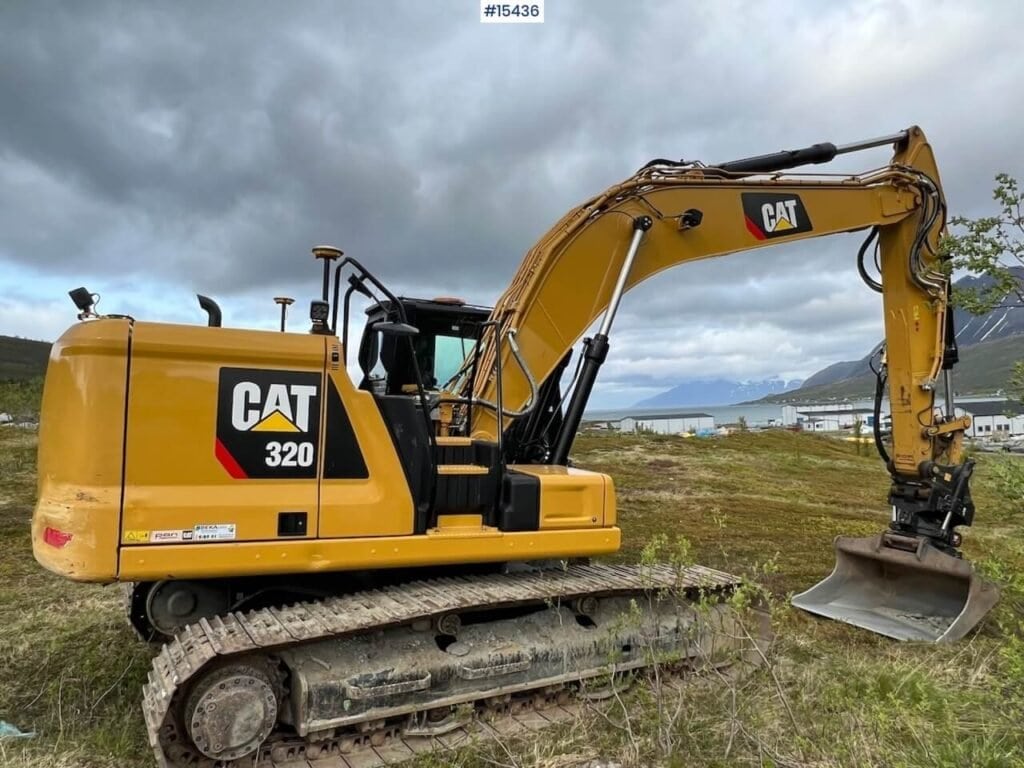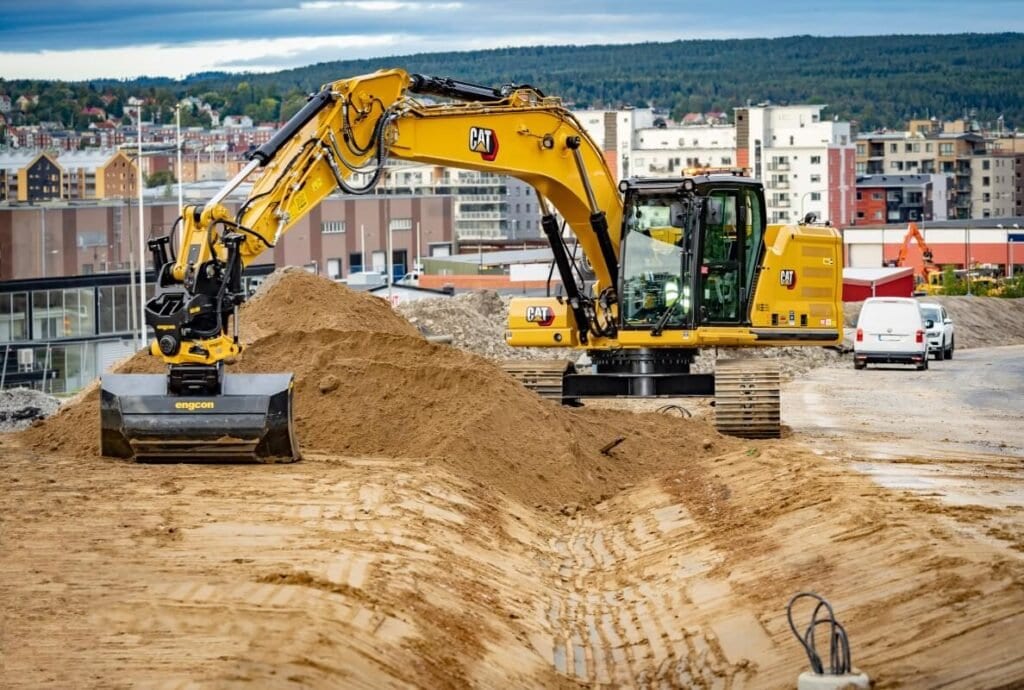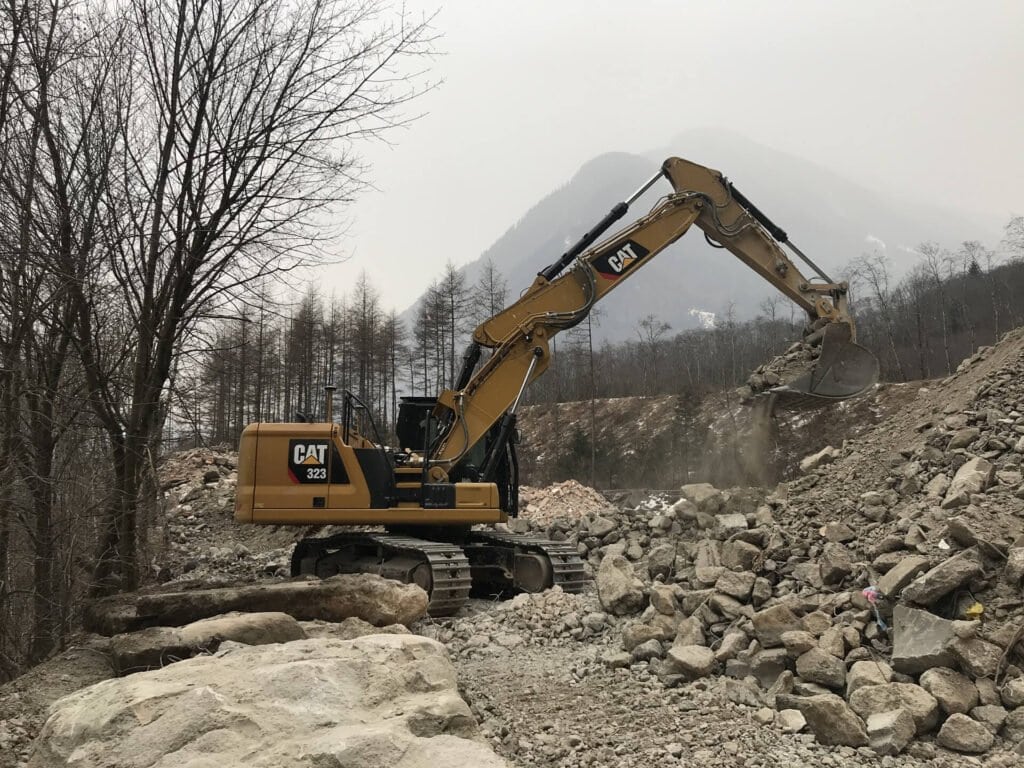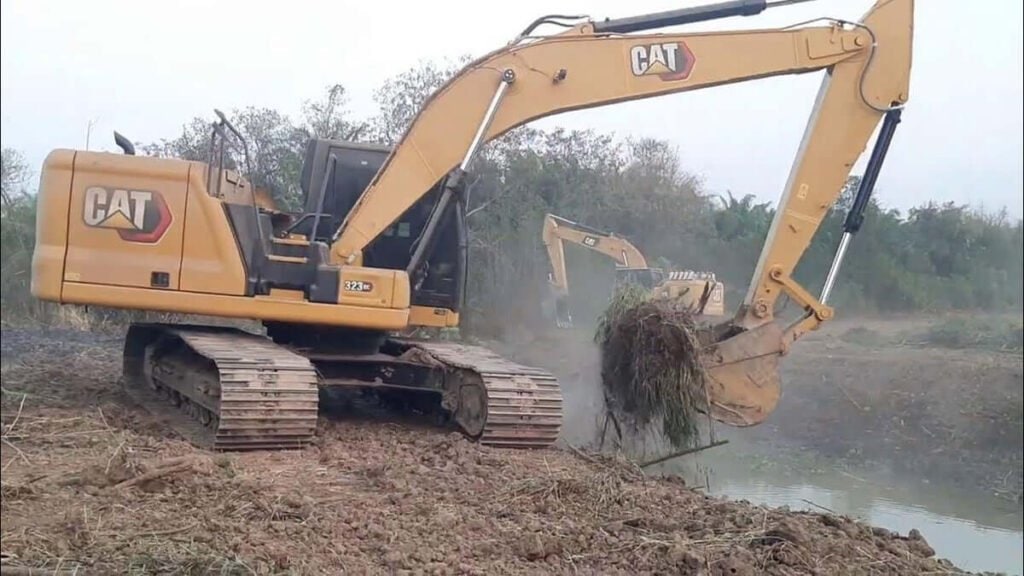
When it comes to choosing the right excavator for your project, the CAT 320 vs CAT 323 debate is an essential consideration. Both models are part of Caterpillar’s well-respected family of mid-sized excavators, but each comes with its own set of features, benefits, and applications. Understanding the differences between the two will help you make an informed decision based on the specific requirements of your construction job.
1. Operating Weight and Size
The CAT 320 is slightly lighter than the CAT 323, making it more suitable for projects that require flexibility and maneuverability in tighter spaces. The CAT 320 has an operating weight of around 22,500 kg, whereas the CAT 323 weighs approximately 25,000 kg. While the extra weight of the CAT 323 provides enhanced stability, it may be less ideal for projects in confined or compact environments.
- CAT 320: 22,500 kg
- CAT 323: 25,000 kg
The extra weight in the CAT 323 allows for a higher level of stability, especially when working on uneven or soft ground. If your project involves heavy lifting or challenging soil conditions, the CAT 323 might be the better choice. However, if flexibility and ease of movement are more critical, the CAT 320 would be a suitable option.
2. Engine Power and Performance
Both the CAT 320 and CAT 323 are equipped with advanced engines that offer impressive power, but there are slight differences in their performance capabilities. The CAT 320 has a net power output of around 130 kW, while the CAT 323 offers a slightly more powerful engine, producing approximately 155 kW.
- CAT 320: 130 kW
- CAT 323: 155 kW
This difference in engine power means the CAT 323 has a bit more strength, making it ideal for heavier lifting and digging applications. It’s particularly suited for large construction sites that demand continuous, high-efficiency performance. On the other hand, the CAT 320 provides an excellent balance of power and fuel efficiency for standard projects, making it a great all-around machine.

3. Hydraulic System and Digging Force
One of the key factors that differentiate the CAT 320 vs CAT 323 is their hydraulic systems. The CAT 323 boasts a more robust hydraulic system, delivering higher digging force and faster cycle times. This improvement makes the CAT 323 a preferred choice for tasks that require heavy digging or handling of dense material. On the other hand, the CAT 320 still provides excellent hydraulic performance but with less digging power compared to the CAT 323, which makes it better suited for lighter digging and earthmoving.
- CAT 320: Lower hydraulic power, suited for lighter duties.
- CAT 323: More powerful hydraulics, ideal for heavy digging and high-load applications.
If your project involves lifting and digging large quantities of heavy material, the CAT 323 is likely the better option, as it will perform more efficiently under such conditions.
4. Bucket Capacity and Reach
When comparing the CAT 320 vs CAT 323, you’ll find that the CAT 323 generally offers a larger bucket capacity and extended reach. The CAT 323 can handle larger buckets, which means it can move more material in less time. This is a crucial feature for large-scale projects that involve substantial earthmoving or material handling tasks.
- CAT 320: Bucket capacity of 0.8 – 1.2 m³.
- CAT 323: Bucket capacity of 1.0 – 1.5 m³.
The increased bucket capacity and longer reach of the CAT 323 are beneficial for tasks like site preparation, digging foundations, and handling larger construction materials. However, if your project involves more delicate work or smaller-scale excavation, the CAT 320 with its slightly smaller reach and bucket capacity might be sufficient.

5. Fuel Efficiency and Operating Costs
Both excavators are designed to be fuel-efficient, but the CAT 320 tends to be slightly more fuel-efficient than the CAT 323 due to its lighter weight and lower engine power. For projects where fuel costs need to be closely managed, the CAT 320 might provide a more economical solution without compromising on performance.
- CAT 320: More fuel-efficient due to lighter weight and smaller engine power.
- CAT 323: Requires more fuel to support its larger engine and heavier weight, but offers higher power and performance.
If you’re looking for an excavator that can handle heavy-duty tasks while still keeping operational costs in check, the CAT 320 is a good choice. However, if fuel efficiency is less of a concern and your main goal is raw performance, the CAT 323 is the machine to consider.
6. Приложения
Both the CAT 320 and CAT 323 are versatile machines, but their ideal applications vary slightly due to their differences in power and size.
- CAT 320: Best suited for standard construction tasks such as trenching, grading, and light digging. It excels in residential, commercial, and utility construction projects.
- CAT 323: Designed for heavy-duty excavation, material handling, and large-scale construction work. It’s particularly useful for road construction, mining, and heavy lifting tasks.

7. Comparison of CAT 320 vs CAT 323
Here’s a detailed comparison between the CAT 320 and CAT 323 excavator models. This comparison will help you understand their key differences, performance capabilities, and ideal applications.
| Specification/Feature | CAT 320 | CAT 323 |
|---|
| Эксплуатационная масса | 22,500 kg | 25,000 kg |
| Мощность двигателя | 130 kW | 155 kW |
| Гидравлическая система | Smaller hydraulic power, ideal for light tasks | More powerful hydraulic system, suitable for heavy-duty tasks |
| Digging Force | Lower digging force, suitable for lighter excavation jobs | Higher digging force, designed for heavy digging tasks |
| Емкость ковша | 0.8 – 1.2 m³ | 1.0 – 1.5 m³ |
| Максимальная глубина копания | 6.7 m | 7.3 m |
| Топливная эффективность | High efficiency, best for medium to smaller projects | Lower efficiency but offers more power and performance |
| Operating Efficiency | More efficient for tighter spaces, urban construction, and smaller-scale tasks | Better suited for large-scale earthworks, mining, and heavy construction |
| Machine Type | Medium-sized hydraulic excavator, compact design | Heavy-duty hydraulic excavator, larger design |
| Work Environment | Best for residential, commercial, and small-scale construction | Best for large construction sites, mining, and large earthmoving operations |
| Stability & Производительность | Good stability for medium-duty operations and restricted spaces | Excellent stability and performance for heavy-duty applications with large workspaces |
| Serviceability & Обслуживание | Lower maintenance cost and easier servicing due to smaller size | Slightly higher maintenance cost but designed for long operational lifespans in harsh environments |

Key Differences:
- Engine Power and Performance:
- CAT 320 has a 130 kW engine, providing adequate power for medium-duty tasks. It’s more fuel-efficient and ideal for smaller-scale projects.
- CAT 323 features a more powerful 155 kW engine, designed for larger, more demanding tasks like heavy digging, mining, and earthmoving. While its fuel efficiency isn’t as high as the CAT 320’s, it compensates with superior power and capacity.
- Гидравлическая система:
- The CAT 320 has a smaller hydraulic system, which is ideal for less demanding tasks that don’t require excessive lifting or digging force.
- The CAT 323, on the other hand, is equipped with a more robust hydraulic system, perfect for handling tougher materials and larger workloads.
- Емкость ковша:
- The CAT 320 typically has a smaller bucket capacity (0.8 – 1.2 m³), making it suitable for medium excavation tasks where precision and flexibility are key.
- The CAT 323 offers a larger bucket capacity (1.0 – 1.5 m³), making it ideal for heavy excavation tasks where large amounts of material need to be moved quickly.
- Applications:
- The CAT 320 is perfect for residential and commercial construction, as well as small to medium earthmoving projects.
- The CAT 323 excels in large-scale construction, mining, and other heavy-duty tasks that demand greater lifting capacity and digging force.
- Топливная эффективность:
- The CAT 320 provides better fuel efficiency, which is ideal for projects with a tight budget or for those requiring multiple hours of operation in confined spaces.
- While the CAT 323 consumes more fuel, its ability to tackle larger, more demanding projects means that it can save you time and labor costs in the long run.
Which Model is Right for You?
- If you’re working on a medium-sized construction project, with limited space and light to medium excavation needs, the CAT 320 would be a great fit. It’s fuel-efficient, compact, and offers versatility.
- On the other hand, if you’re involved in large-scale, heavy-duty excavation, mining, or earthmoving tasks, the CAT 323 is more suited to your needs. It offers better performance, more power, and the capacity to handle large loads with ease.
Both of these machines are excellent choices, but understanding your specific project requirements will help you decide which one is the best for your construction needs.

Заключение
The CAT 320 vs CAT 323 decision boils down to the specific needs of your construction project. If you need a more compact and fuel-efficient excavator for lighter tasks, the CAT 320 would be the ideal choice. However, if your project requires additional digging power, a larger bucket capacity, and enhanced performance in demanding environments, the CAT 323 would be better suited for the job.
Both machines offer excellent reliability and performance, so choosing the right one will depend on the specific requirements of your worksite and the scale of your projects. By understanding the key differences, you can confidently select the best Caterpillar excavator model for your needs.